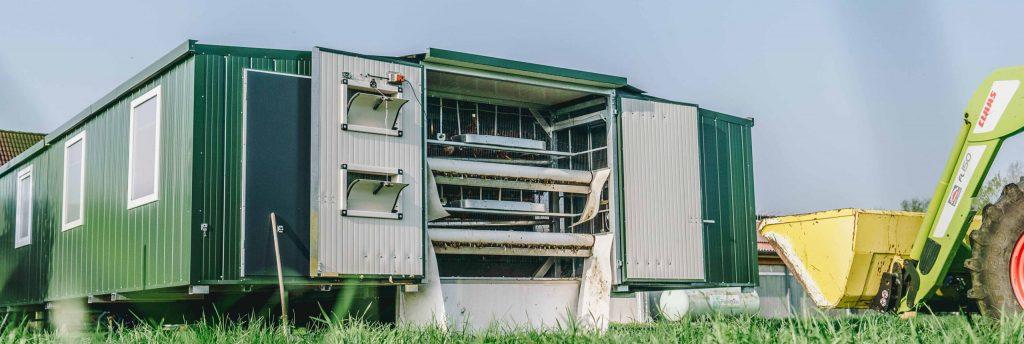What kind of work is involved?
The work that needs to be done in a mobile henhouse can be divided into two types. On the one hand, there is the recurring, daily work such as checking the animals and the hen house. And also collecting, sorting and packing the eggs.
On the other hand, there is the time-consuming work that needs to be done once a week. This includes refilling the feed and water storage containers, mucking out and moving the mobile hen house.
You should know in advance that the amount of labour required varies. Depending on the structure, equipment and size of the mobile henhouse. There are also other factors, such as the conditions of the yard and the exercise area. These influence the time required, which is why it is important to note that no generalised statement can be made about the exact time required.
This article is based on our experience and our time estimate. It is based on a number of approximately 350 free-range laying hens in a fully mobile barn.
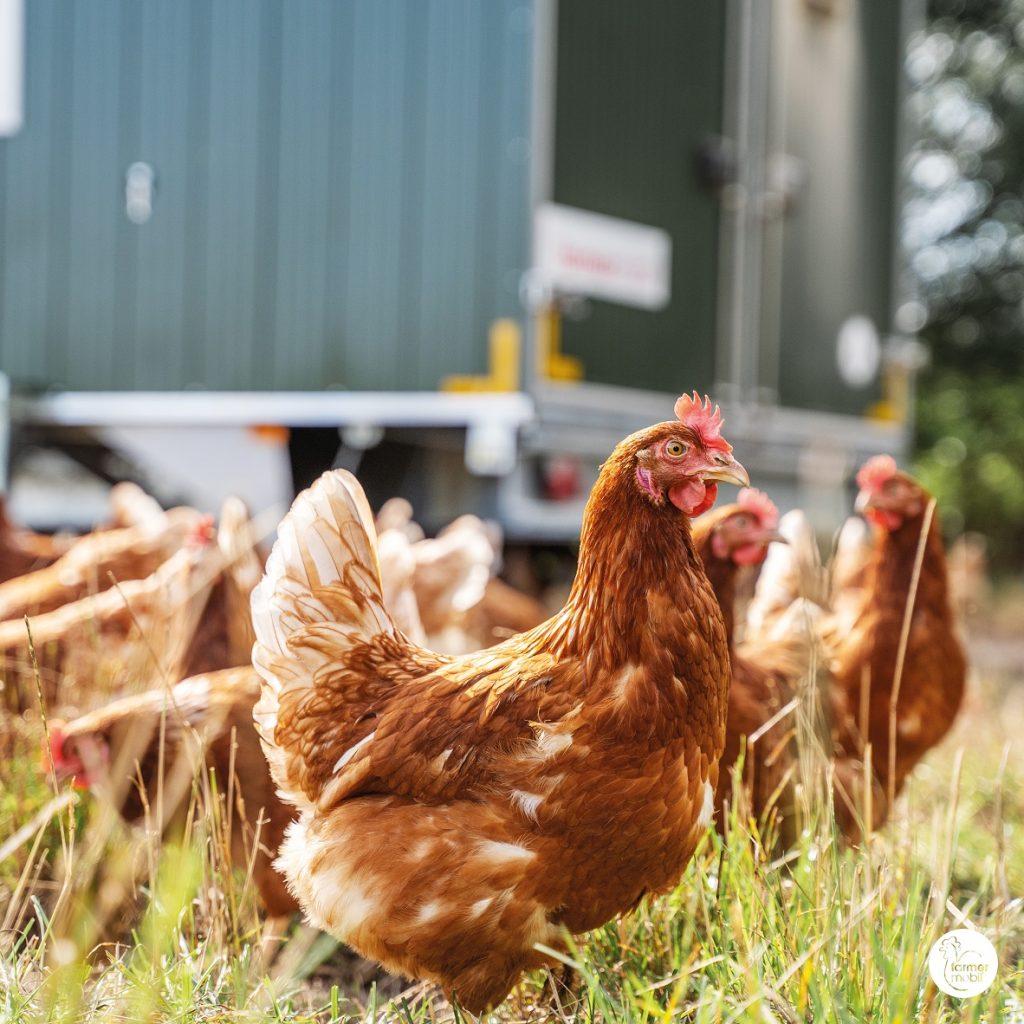
Collecting the eggs and animal control
The most common work in a henhouse is probably collecting and sorting the eggs. Chickens lay the majority of their eggs in the nests provided in the mobile hen house.
Depending on the equipment of the system, the eggs are removed from the nests by hand. Or transported to a central collection point using an egg belt.
Collecting the eggs directly from the nests by hand is much more time-consuming. Therefore it takes considerably longer than in a mobile henhouse with an egg conveyor. For mobile hen houses with an egg belt, a distinction is also made between electrically or manually driven egg belts.
The amount of labour required also differs depending on the model. With an electrically driven egg conveyor, the eggs can already be removed while the egg conveyor is running. With a manual egg conveyor, on the other hand, the eggs have to be transported to the collection point using a small crank.
A tip for you
A tip for all interested chicken farmers: The mobile henhouses from farmermobil are equipped with an electric egg belt. Which transports the eggs into a hygiene sluice at the entrance to the mobile henhouse at the touch of a button. Here, the eggs can be conveniently and safely removed and then sorted.
Even if most of the eggs are laid in the nest. A few hens may lay their eggs in other places in the mobile house. You should check this daily and also collect these eggs.
In the same step, you can take a tour of your barn and check the number of laying hens and the condition of the mobile hen house.
Based on the experience of our barn operators, you should plan between 0.75 and 1 hour per day for collecting the eggs and checking your hens. We also recommend a second inspection in the evening. To check whether your animals are doing well and whether any eggs have been laid.
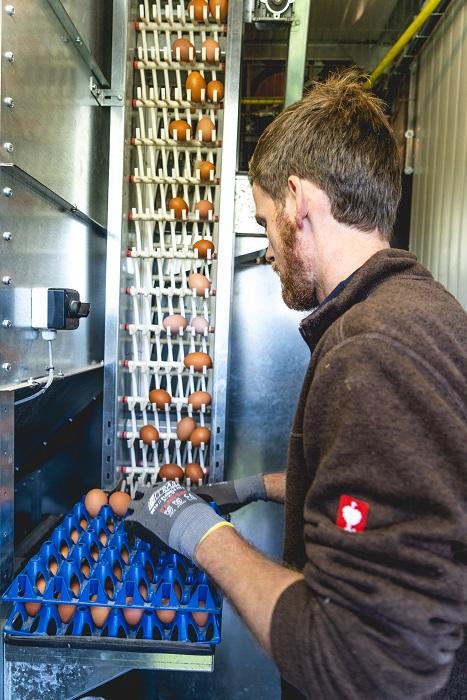
Replenishing your chickens’ feed supply
Each hen consumes approx. 130-150g of feed per day. Because if you want to lay fresh eggs, you also need good feed. In mobile henhouses, the feed is either stored in an internal feed silo, from which the feed line is automatically filled via a computer control system. Or in less mechanised houses in small automatic feeders, which have to be filled manually several times a week as they only have a small capacity.
If a mobile henhouse is equipped with an internal silo, the supply lasts one to two weeks if the silo is filled once. This depends on the feeding behaviour and stocking density of the animals. If the mobile henhouse is only equipped with automatic feeders, these must be filled by hand several times a week.
How often the feed needs to be refilled also varies depending on the type of feed. As different types also differ in their density, which is why less fits into the silo. We recommend that you use a mobile henhouse with an integrated feed silo. To save yourself a lot of labour time and, above all, the strenuous carrying of feed buckets or feed sacks.
In our experience, it makes sense to schedule a fixed day each week for topping up the food. This creates regular and predictable routines that make your work easier. You can plan around 0.75 hours per week for topping up the food.
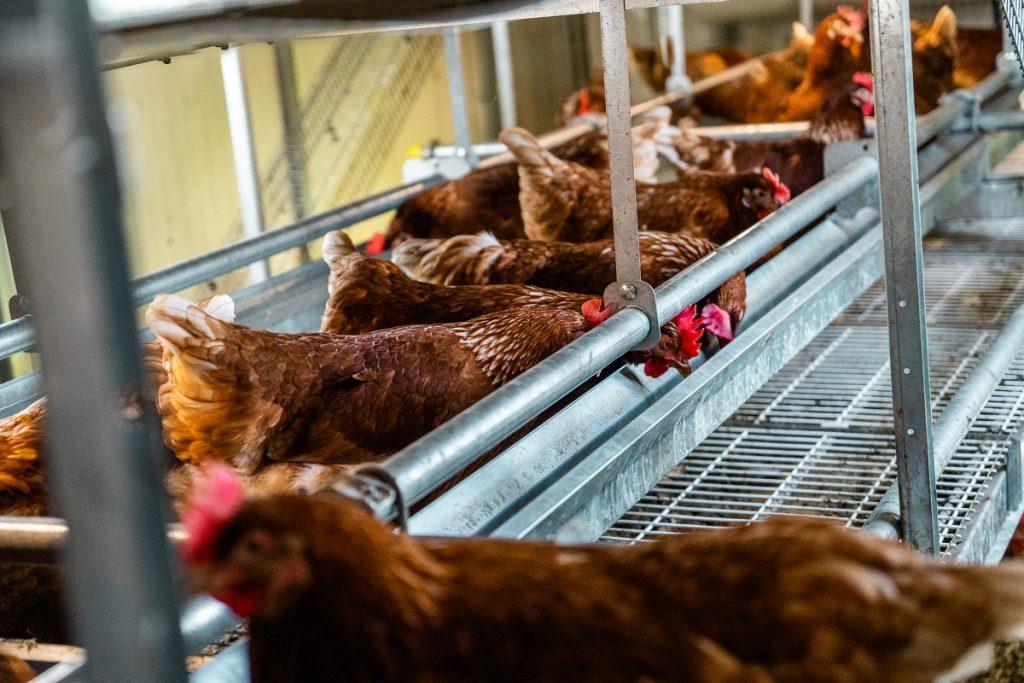
Filling up the water supply for your hens in your mobile henhouse
As with your feed supply, we also advise you to fill the water tank. The water supply in mobile henhouses is usually designed to supply your chickens for several days. Depending on the time of year and stocking density, the drinking behaviour of your chickens changes. Therefore also the length of time until the supply is used up. On average, a laying hen drinks around 200 ml of water. On warm summer days, however, up to 300 ml or more!
An important tip for hot summer days: make sure your mobile stable is not connected to a fixed water pipe. This is because the water in the hose can heat up considerably. You should also make sure that the water is not in the water tank for longer than 4 days in summer. As water can also tip over. And what we don’t want to drink ourselves, our chickens don’t want to drink either. That’s why we recommend topping up the water supply once a week in summer.
On average, it takes 0.75 hours per week to fill the water tank.
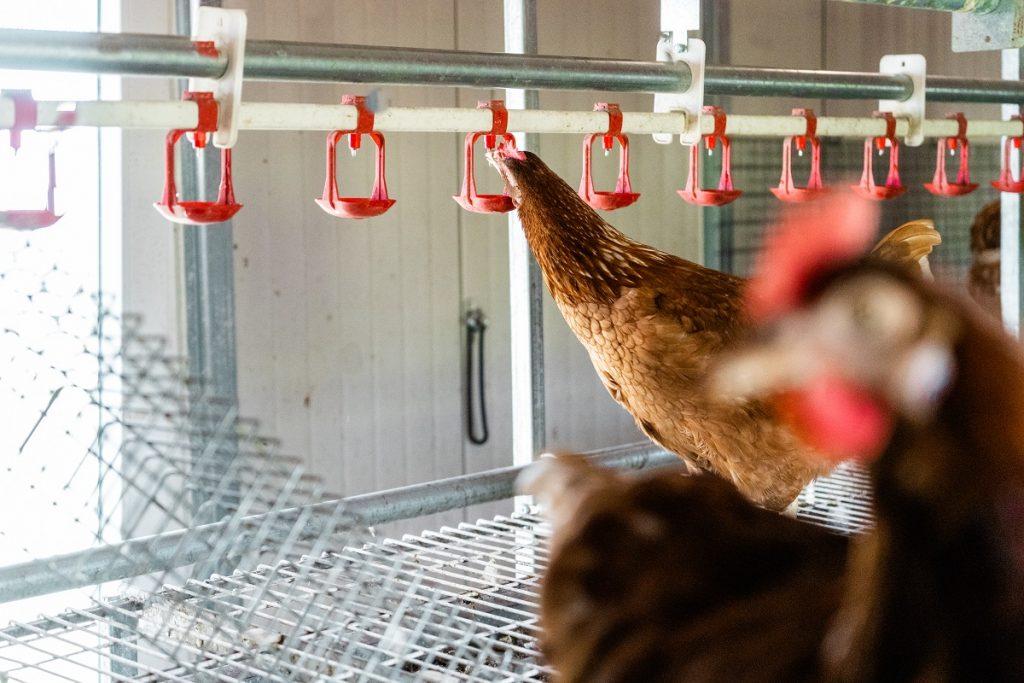
Mucking out the mobile henhouse
Removing the chicken droppings in a mobile henhouse also takes time. Depending on the equipment, mobile chicken coops are either equipped with a manure pit or with all-round manure belts.
In a manure pit, the chicken manure usually remains lying around for longer. Which causes the climate in the barn to deteriorate considerably due to the high ammonia content in the manure. On manure belts, the manure is collected and can be removed weekly. So that the climate in the barn is always pleasant.
It is important for you to note when choosing a mobile barn: Manure belts can be electrically or manually driven. With manually driven manure belts you have way more work to do. You have to laboriously turn the manure belts with a hand crank to transport the manure out of the barn. With an electric drive, the work is done for you and the manure belt is activated at the touch of a button. In the chicken coops from farmermobil only electrically driven manure belts are used. This makes your work as easy as possible. For manure removal, a front loader bucket or a trough can be driven under the rear of the mobile poultry house.
Regular mucking out is important
We recommend that you muck out the mobile henhouse weekly. This minimise the amount of chicken droppings in the henhouse. This ensures better air quality in the mobile hen house and the best possible life for your laying hens. While the manure belt is circulating, you can use the time to go into the coop. Use a rake or shovel to throw the chicken droppings and old litter from the scratching area onto the manure belt. You can then add fresh bedding to the scratching area so that your chickens have a dry and firm surface.
On average, around 0.5 hours per week are spent on mucking out.

Move the mobile henhouse to a new location
A major advantage of the mobile henhouse is its mobility. By moving it regularly, you maintain the sward of your run area and can always provide your chickens with fresh and nutrient-rich soil.
The time required to move a mobile henhouse varies depending on the coop system and the associated mobility. There are semi-mobile and fully mobile chicken coops, which differ greatly in terms of the effort required to move them. A semi-mobile coop usually stands on skids or must first be mounted on a chassis before being moved.
This increases the time required for moving. Large semi-mobile barns also require a great deal of pulling power, which many farm tractors cannot provide. In these cases, friends or a service provider may even have to be called in to provide the necessary horsepower.
Is every mobile henhouse easy to move?
A fully mobile stable system, stands on a chassis and is ready to drive at any time without any effort. The tractor is coupled to the barn, the supports are retracted and then you are ready to go. In addition, smaller fully mobile barns are also approved for road traffic. Which means that they can also be transported on public roads. And even more distant areas can be reached with the mobile barn. The time required for relocation is therefore considerably less than with a semi-mobile stable system.
Our tip for you: When making your choice, make sure that the mobile barn is fully mobile and can be moved easily. A suitable model for this could be the STARTER-max for up to 450 laying hens.
On average, it takes between 0.5 and 1 hour to move a fully mobile housing system. Depending on site conditions, and should be done on average every 2 weeks.
If you are interested in how moving our mobile barns works, you can watch our informative video.
Grassland maintenance and fence control for your chicken field
Grassland maintenance and fence control of your run area around the mobile henhouse is also one of the most common tasks. The time required depends on the condition, conditions and size of the area available to the hens.
We advise you to check your meadow and its fencing daily. This will reduce the risk of injuries and unwanted predators such as the fox. This activity is also used to decide when the mobile stable needs to be moved.
An average of 9 hours per month is spent on grassland maintenance and fence control.
You can find all the requirements for the exercise area of a mobile stable in our last blog article:
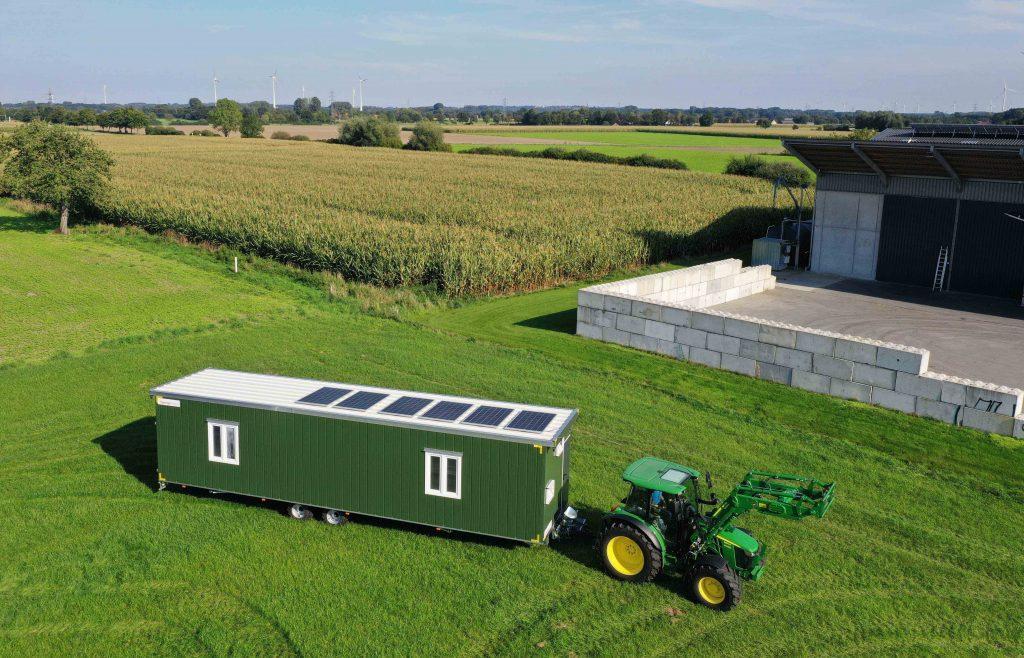
Housing and unhousing your laying hens
The lifespan of chickens in mobile henhouses is around 12-14 months. After each laying period, the old hens are usually removed, slaughtered and marketed as soup chickens. After a thorough cleaning and disinfection of the housing system, young hens aged around 18 weeks are housed again.
It takes an average of 2 hours a year to move the chickens in and out of your mobile henhouse. Every mobile hen house should be cleaned after a flock has been turned out. A high-pressure cleaner or other suitable cleaning equipment can be used for this purpose.
Cleaning and disinfecting takes at least 8 hours a year. Depending on the effort involved, and should be carried out thoroughly and carefully. In total, you should expect to spend at least 10 hours on the entire process.

OUR SUMMARY
As this list shows, a mobile chicken coop should not be underestimated in terms of labour efficiency. Nevertheless, you can save a lot of labour and money by using as much automation technology as possible.
When deciding on a mobile henhouse, we recommend that you make sure it is fully automated. As this gives you more time to concentrate on marketing and the welfare of your animals. It also allows you to run a mobile henhouse as a sideline.
In addition, defining fixed days for the weekly tasks can help you to develop a routine.

You would like to find out more about mobile poultry farming or are interested in other agricultural topics? Then yo can read more interesting articles on our blog. We regularly provide an insight into practice on the farm.
We look forward to your comments – exchanging ideas with like-minded people is important and helpful. So it’s worth stopping by! We look forward to meeting you!

